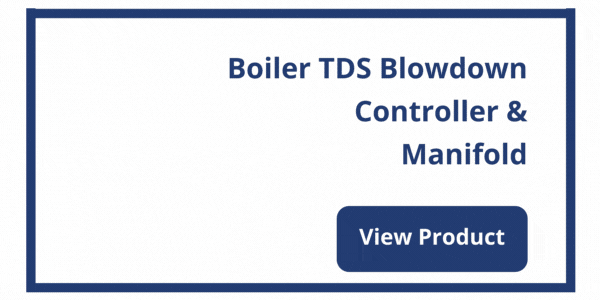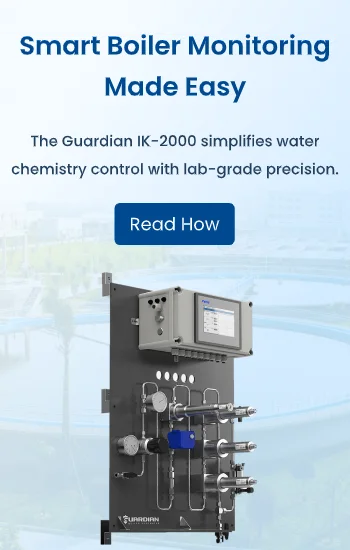What are the Important things to keep in mind with boiler water!
Control of the Conductivity/TDS (Total Dissolved Solids)
When it comes to boiler water if you run it too high, the water can foam, resulting in carryover of water & chemical into the steam system, which can contaminate product or otherwise adversely affect your process. Run the TDS too low and you’re putting money down the drain in wasted water, treatment chemical and above all - Fuel. It costs money to heat that water to boiling point and then a bit more to turn it to steam, so it’s best to keep as much of that energy inside the system as is safely possible.
How do you control it?
Controlling the boiler’s TDS is done by blowdown – opening a valve and allowing the steam pressure to push a portion of the high Conductivity water, out of the boiler so it can be replaced by lower Conductivity feed water, thereby lowering the boiler TDS by dilution. All boilers will have at least one bottom blowdown valve, which when opened at operating pressure, results in a great deal of water exiting the boiler in a very short time. Bottom blowdown is essential for the removal of boiler sludge and suspended solids. How much sludge a boiler has is dependent of the quality of the make-up water and the methods of treatment in use.
Senario:
The ‘normal’ way to do this would be for the boiler attendant to come along and open the bottom blowdown valve for a length of time, say 5-10 seconds once or perhaps twice per 8 hour shift.
So if we graphed the boiler TDS over time, we would see something like this sawtooth pattern. With Automatic TDS control, the boiler TDS can be maintained within a few percent of the target. In the example below a short bottom blowdown, just 2-3 seconds is still performed once in each 8 hour shift for sludge removal.
Control methods to keep it close to the target TDS
Boiler TDS is more easily controlled by a smaller valve which can bleed off water as required to maintain the boiler TDS within a small range, close to the target TDS level. Several approaches to this exist, namely:
- Continuous blowdown valve – an orifice plate or needle valve, through which a small stream of boiler water is constantly pushed out; previously more common but still seen on some large boilers.
- Timed blowdown – a timer activates a solenoid or actuated valve, which opens for a set duration at set intervals.
- TDS controlled blowdown or Auto-TDS blowdown – a solenoid or actuated valve is opened when a TDS probe in the boiler water detects TDS above a set-point. The valve is closed after the TDS has fallen to a second, lower set point.
The first two methods can work reasonably well in a boiler which is doing the same duty all day, every day. They do not respond to changes in steam demand or feed water quality which can drastically affect the boiler TDS. However, most boilers in hospitals, laundries food & beverage plants & factories are not running steadily all day every day. Steam demand is highly variable with peaks and troughs throughout the day.
Are there Automatic Methods that work better?
Yes! Auto-TDS blowdown as the name suggests, will maintain the boiler TDS within a narrow band (hmmm….using the measured TDS level to control the TDS? Makes sense!). It will respond seamlessly to changes in boiler duty, feed water quality, and returned condensate quantity & quality. Auto TDS can also yield a worthwhile energy saving over a boiler not so controlled.
Immediately you notice the saw blade has smoothed right out and that the average TDS level is much closer to the target TDS. The short story of this is that less energy is wasted. If you are interested in the long story and quantifying potential savings and ROI or simply wanting to learn our thermodynamics calculations then feel free to contact us!




